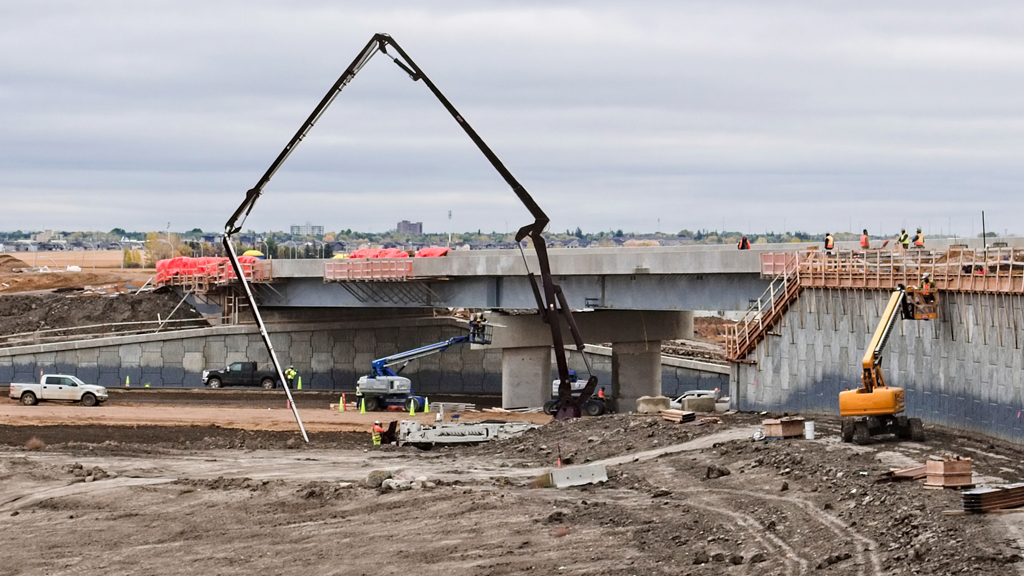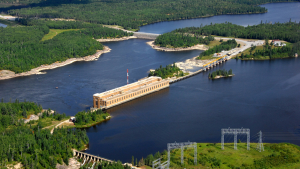Saskatchewan’s highway infrastructure is paving the way for an economic boom, as billions of new investment dollars are pouring into the province as part of an economic growth plan.
“In the last year or so, we have seen $15 billion of private investment in the province,” said Saskatchewan’s new Highway Minister Jeremy Cockrill, who came to the cabinet post in June. The influx of new investments includes the largest potash mine development in the world and new forest industry manufacturing facilities and ventures.
“We know there is going to be more traffic on the highways and there is going to be heavier truck traffic,” he said, as the province looks to upgrade and improve its highway structure. “We know we have to make that investment of government to accommodate new industry.”
Last year Saskatchewan spent $830 million in highway improvements and the 2022 budget calls for investing another $479.5 million. Major two-lane arterials are being twinned and passing lanes added to address increasing economic vehicle traffic.
Cockrill estimates 1,100 kilometres of road within the provincial roadway will be built or upgraded in 2022.
“It is still early in the year,” he said, as the exact tally isn’t determined yet, and some contractors have fallen behind because of a wet spring, but he is confident the ministry will still make its commitment.
The estimate will add to the target set out in Saskatchewan’s Growth Plan 2020-2030 which aims to build or upgrade 10,000 kilometres of provincial highway over the decade.
Saskatchewan was ahead of schedule last year with 1,350 improvements bringing a 2020 and 2021 total to 2,350 kilometres upgraded so far.
The ambitious growth plan calls for increasing the population by 1.4 million, bringing in as much as $16 billion annually in new investment, creating 100,000 new jobs, increasing the value of exports by 50 per cent, increasing international markets by $1 billion, increasing agri-food exports to $20 billion, and doubling the size of the forest industry as well as bringing potash sales to $9 billion.
“The plan really impacts everything we do,” said Cockrill.
Cockrill said Saskatchewan has one of the largest road networks per capita in Canada with an extensive grid that covered the entire southern half of the province. Major four-lane highways include Highway 1 (connecting Regina, Moose Jaw and Swift Current), Highway 15 and Highway 11.
“It is the two-lane highways where we have made a targeted effort,” he said, focusing now on those areas that are impacted by economic growth or corridors that serve large-volume vehicle traffic such as municipalities, industrial and agricultural areas.
Safety is also a major concern on highways and intersections. Cockrill said the province has made a concerted effort to make intersections safer after the 2018 Humboldt truck and bus crash that saw 16 killed and 13 injured.
In 2019, a five-year $100-million program was launched to improve intersection safety which includes intersection design improvements, improving sightlines, eased entry from small roads onto busier highways and rumble strips.
Another area of focus has been the Saskatoon to the Alberta border, said Cockrill, as it is a major corridor to markets such as Calgary and to West Coast ports.
Twinning of Highway 7 has occurred from Saskatoon to Delisle and passing lanes have been installed along the route with the latest west of Kindersley.
More twinning is now occurring on major routes.
Cockrill said twinning is occurring on Highway 3 from the intersection on Highway 2 to the Shell River Bridge for a distance of eight kilometres. The design, provided by Associated Engineering, also included passing lanes between Shellbrook and the Shell River Bridge, which opened late last year. The twinning project is expected to be completed by fall 2022.
Highway 5 is also undergoing a three-phase upgrade concluding a 10 kilometre section of twinning slated for the area from Saskatoon to Old 27 Road. The proposal calls for tenders for this third phase to be made in the winter of 2022 with construction carried out in 2023 to 2025.
Highway 5’s first phase, now complete, included about 10 kilometres of repaving, widening and sightline improvements through the hills and valleys east of Old 27 Road to Blucher Road. Contractor HJR Asphalt of Saskatoon carried out the work. HJR Asphalt has five portable asphalt plants and produces the majority of Saskatchewan’s cold mix asphalt used in maintenance work.
The second phase is being carried out in two contracts to limit road construction over the 30 kilometre stretch of highway from Highway 2 to Blucher Road. Langenburg Redi-Mix of Regina is the contractor for the first segment work from Highway 2 to about 15 kilometres west. The work includes repaving, widening, sightline improvements and the construction of eastbound and westbound passing lanes.
Design work is nearing completion for the second segment of Phase 2, which will stretch the final 15 kilometres to Blucher Road.
In addition, the ministry this spring provided funding to 13 short-line railways, which service the grain industry, totalling over $500,000 to improve rail lines, bridges and intersections.
“We are a land-locked province,” said Cockrill. “A key part of unlocking our province is a good transportation system.”











Recent Comments
comments for this post are closed